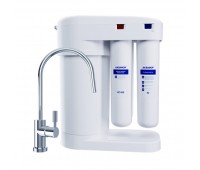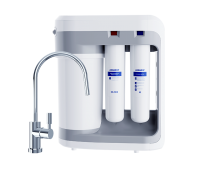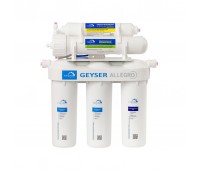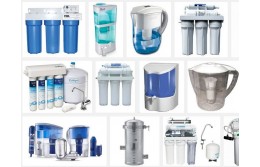Reverse osmosis
Reverse osmosis is a process in which, at a certain pressure, a solvent (usually water) passes through a semipermeable membrane from a more concentrated to a less concentrated solution, that is, in the reverse direction for osmosis. In this case, the membrane passes the solvent, but does not pass some substances dissolved in it.
Reverse osmosis has been used since the 1970s for water purification, obtaining drinking water from seawater, and obtaining particularly clean water for medicine, industry, and other needs. Using reverse osmosis, you can also produce juice concentrates without heating.
Application
Reverse osmosis is one of the most promising and widely used methods of water purification and treatment. The reverse osmosis unit is able to remove particles with sizes of 0.001-0.0001 microns from the water. This range includes hardness salts, sulfates, nitrates, sodium ions, small molecules, and dyes. For more efficient operation, we recommend using pre-treatment steps (mechanical cleaning and micro -, ultra-or nanofiltration) that remove larger particles.
Technical implementation
An industrial reverse osmosis desalination plant usually includes the following equipment: a fine water filter, a reagent preparation system, a high-pressure pump, a block of filter modules, sensors and control devices[6].
The main element of the reverse osmosis system is a semi-permeable reverse osmotic membrane placed in the housing. It receives the source water, and two streams are diverted — purified and desalinated, which is called permeate, and water with concentrated impurities, called concentrate, which is drained. Water is forced through the membrane at high pressure, which creates a pump, usually a multistage centrifugal or rotary. To slow down the formation of undesirable deposits on the membranes, a sedimentation inhibitor is dosed. To remove precipitation from the surface of the membranes, a chemical washing system is used. To control the quality of cleaning and pH — flow meters of salinity and pH meters. To control the flow of permeate and concentrate — flow meters. The reverse osmosis system can be controlled in semi-automatic or automatic mode. You can check the quality of the reverse osmotic membrane using a TDS meter.
An example of household water treatment with a reverse osmosis membrane is a filter that has 3 cartridges-coarse (mechanical) cleaning, a reverse osmosis membrane, and a carbon filter. Such filters are widely used in America, Europe and Asia. Also of interest are the latest models of compact reverse osmosis filters, which have a number of innovations, namely, an automatic water shut-off valve when leaks are detected, a pump, and replaceable filters with quick-release fittings.






